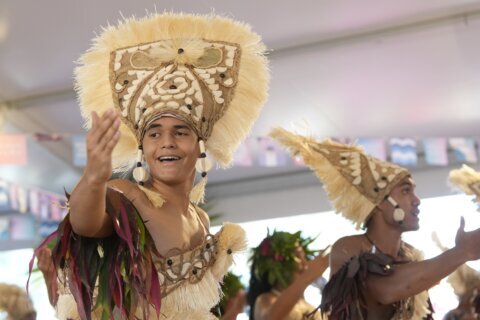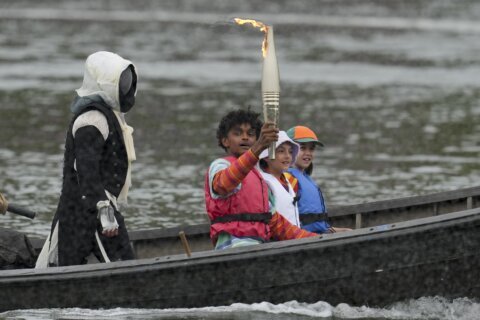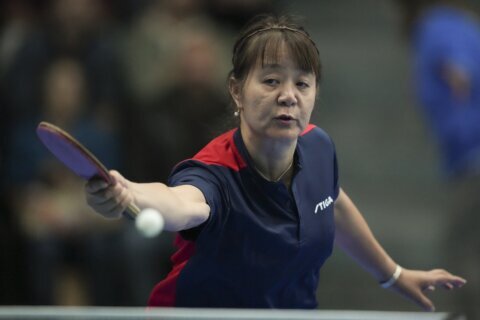WASHINGTON — Karen Anderson, a mother of three, moved to D.C.’s Edgewood neighborhood 18 years ago. She was a nurse who worked long hours, so it was important that her sons had something safe and constructive to do while she was away. So she signed them up for youth sports at Beacon House.
Today, two of her sons have gone on to college — one on an athletic scholarship to a school in California. Her youngest son, a 13-year-old, is thriving at his middle school.
“Being a single parent, I had a lot on my plate,” Anderson said. “Beacon House alleviated a lot of the things I was going through. They actually took the father role for my boys, to have a male role model in their lives.”
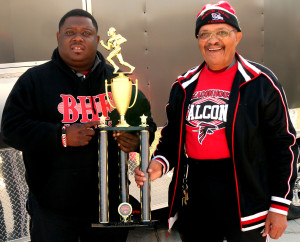
Beacon House Community Ministry is a nonprofit community center that aspires to lift kids out of difficult circumstances. While Beacon House provides mentoring, tutoring, and college and vocational training for youths ages 5 to up to age 18, it’s the sports program that gets most kids in the door.
“I just knew I was playing football for Beacon House,” said 12-year-old Montez Minor, who has been coming to the center since he was 3.
Between 300 and 400 youths are served by Beacon House’s athletics program, which includes football, basketball, softball, volleyball and, soon, soccer, according to Rodney Cephas, a coach and the director of athletics.
“We’re using sports as a way to hook the kids but also let them know that you have to use sports as a way to further your education, put you in places that you might not get into,” said Rodney Cephas, a coach and the director of athletics.
Research suggests that it’s working. George Washington University researcher Monica Ruiz referred to this as the “Beacon House effect.”
“The kids know that this community has their back,” said Ruiz, an assistant research professor at GWU’s Department of Prevention and Community Health.
The Beacon House effect
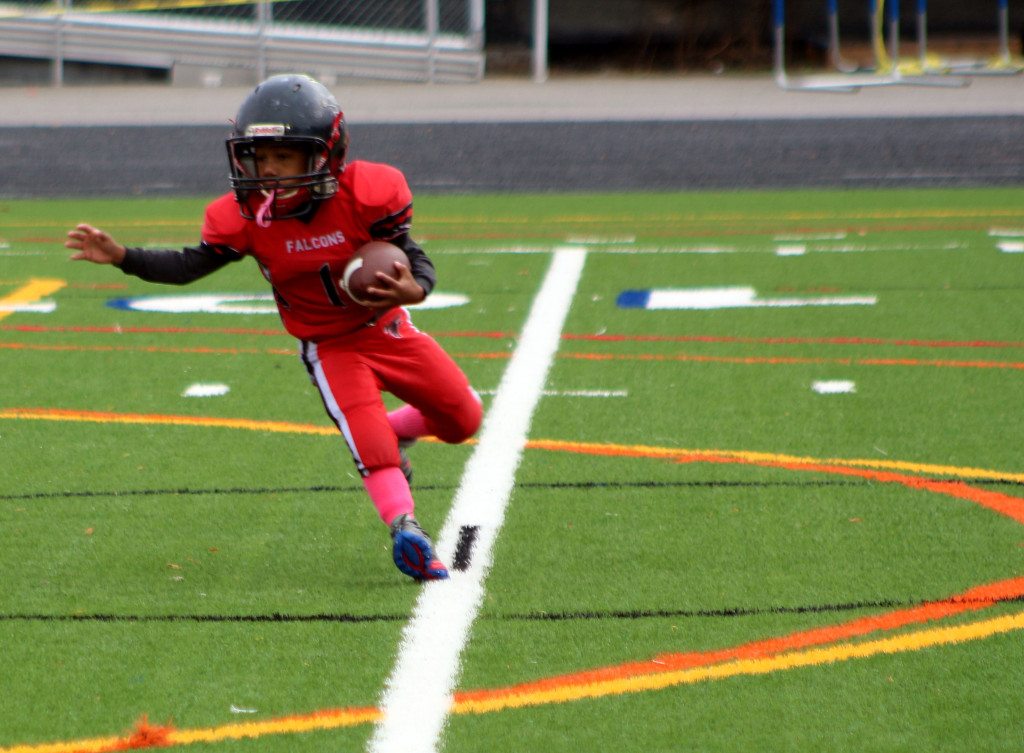
In 2012, Beacon House asked GWU to formally assess its athletics program, measuring the physical and mental well-being of the youths and comparing them to their D.C. peers and young people nationwide. Ruiz said 57 athletes were surveyed in 2013.
The results, which have not been published, found that compared to their peers, Beacon House athletes had higher levels of self-esteem, were more resilient and were less likely to succumb to peer pressure. They also were more likely to stay in school.
“I can do a lot of things as far as football, but Beacon House helps you more because it’s not all about football,” Montez said. “It helps you with school and keeps you out of trouble.”
Ruiz said that the results of the pilot study aren’t definitive — the sample size was small— but the data do suggest that there’s something positive happening at Beacon House.
“There something about the community of Beacon House itself that really lends support to the kids,” Ruiz said.” We see this in the mental health variables.”
Back in the 1990s, Francisco Hooper, 31, played football for Cepahs, who he still calls “Coach Rodney.”
Today Hooper is a dad, a coach and a mentor at Beacon House. He says that instead of asking what he called the “cliché” questions, like “how are you doing in school,” coaches and mentors need show they actively care about their athletes.
In fact, Hooper is known for “pop-ups” — as in he might just pop up at an athlete’s school.
“You have to have a 2.0 before you can even touch the field,” Hooper said.
Ivoryonna Manuel, 15, who plays basketball for Beacon House, said she started coming because her little brothers play sports there. She’s since become a teen mentor and, last year, joined a group of Beacon House youths on a tour of Morgan State University.
“It was fun,” she said.
She says most of her friends go to Beacon House. “People don’t really have things to do after school so we come here and chill.”
‘The wind behind our sails’
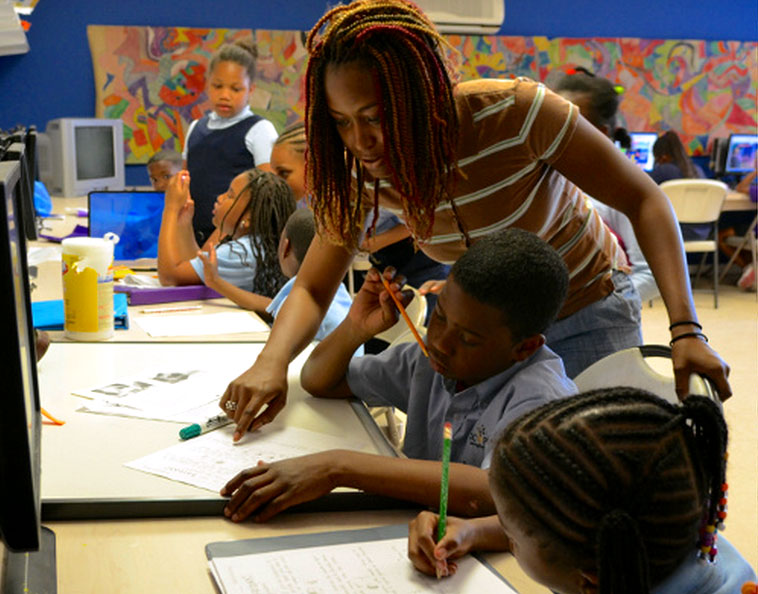
Beacon House was founded in 1991, when the Edgewood community was riddled with drugs. Babies were being born to teen mothers, and youths were dropping out of school in droves, according to the nonprofit’s founder the Rev. Donald E. Robinson.
“It just did not appear that the job was getting done on saving the children,” Robinson said.
At the time, Robinson was an educator and was working with D.C.’s youth services administration.
“It really appeared to me that most people that I worked with were not concerned about improving the lives of the kids they were supposed to be serving,” Robinson said. “I just decided I would try to start a program to help children, to really save them.”
Beacon House is embedded in the Edgewood Commons affordable housing community, located off its namesake street just east of the Brookland and Rhode Island Metrorail stops. This is a neighborhood where the median household income is just under $22,000 (in comparison, D.C.’s overall median is $69,235), according to Census data. The nieghbornood is also part of Ward 5, where there were 24 reported homicides in the past 12 months — the third highest in the District, according to crime data from D.C. police.
Pam Brier, executive director of the Beacon House, said it was the first time the athletics program was formally assessed by researchers.
“This has given us the wind behind our sails to be able to say look, this is really important work we’re doing,” Brier said. “It’s not just about winning games, although we do that a lot and we like to do it, it’s really about what’s happening for kids, as a result. It’s helped us to tell that story and to get people to pay attention.”
Ruiz said she is working on securing a grant to launch a larger study, to see if the results play out in low-income communities similar to the one served by Beacon House. She’s preparing the results of the pilot study for publishing.

